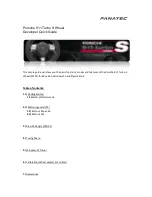
3
WHAT TO DO IN AN EMERGENCY
3
!
JUMP STARTING
D020A02A-AAT
WARNING:
The gas produced by the battery
during the jump-start operation is
highly explosive. If these instruc-
tions are not followed exactly, seri-
ous personal injury and damage to
the vehicle may occur! If you are
not sure how to follow this proce-
dure, seek qualified assistance.
Automobile batteries contain sul-
furic acid. This is poisonous and
highly corrosive. When jump start-
ing, wear protective glasses and be
careful not to get acid on yourself,
your clothing or on the car.
o If you should accidentally get acid on
your skin or in your eyes, immedi-
ately remove any contaminated cloth-
ing and flush the area with clean
water for at least 15 minutes. Then
promptly obtain medical attention. If
you must be transported to an emer-
gency facility, continue to apply wa-
ter to the affected area with a sponge
or cloth.
o The gas produced by the battery
during the jump-start operation is
highly explosive. Do not smoke or
allow a spark or an open flame in
the vicinity.
o The battery being used to provide
the jump start must be 12-volt. If you
cannot determine that it is a 12-volt
battery, do not attempt to use it for
the jump start.
o To jump start a car with a discharged
battery, follow this procedure ex-
actly:
1. If the booster battery is installed in
another vehicle, be sure the two
vehicles are not touching.
2. Turn off all unnecessary lights and
accessories in both vehicles.
HTG4001
Booster
battery
3. Attach the clamps of the jumper
cable in the exact location shown in
the illustration. First, attach one
clamp of the jumper cable to the
positive (+) post or cable of the
discharged battery. Then attach the
other end of the same cable to the
positive (+) post or cable of the
booster battery. Next, using the
other cable, attach one clamp to the
negative (-) post or cable of the
booster battery. Then attach the other
end of that cable to a solid metal part
of the engine away from the battery.
Do not connect the cable to any
moving part.
4. Start the engine in the car with the
booster battery and let it run for a
few minutes. This will help to as-
sure that the booster battery is fully
charged. During the jumping opera-
tion, run the engine in this vehicle at
about 2,000 rpm.
5. Start the engine in the car with the
discharged battery using the normal
starting procedure. After the engine
starts, leave the jumper cables con-
nected and let the engine run at fast
idle or about 2,000 rpm for several
minutes.
Discharged
battery
Summary of Contents for Azera 2005
Page 9: ...B250A01TG GAT INSTRUMENTS AND CONTROLS LEFT HAND DRIVE I B250A01TG ...
Page 11: ...INSTRUMENTS AND CONTROLS LEFT HAND DRIVE II B250B01TG GAT B250B01TG ...
Page 13: ...INSTRUMENTS AND CONTROLS RIGHT HAND DRIVE I B250C01TG GAT B250A01TG R ...
Page 15: ...INSTRUMENTS AND CONTROLS RIGHT HAND DRIVE II B250D01TG GAT B250B01TG R ...
Page 77: ...1FEATURES OF YOUR HYUNDAI 60 B260B01TG GAT Supervision Type B260B01TG ...
Page 275: ...6 DO IT YOURSELFMAINTENANCE 39 G200E01TG GAT Inner Panel HTG4003 1 ...
Page 278: ...Emission Control System 7 2 Catalytic Converter 7 3 7 EMISSION CONTROL SYSTEM 7 ...
Page 288: ...9 VEHICLE SPECIFICATIONS MEASUREMENT 9 2 ENGINE 9 3 LUBRICATION CHART 9 4 9 ...
Page 292: ...INDEX 10 10 ...















































